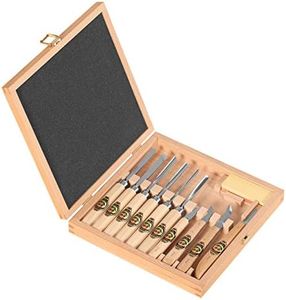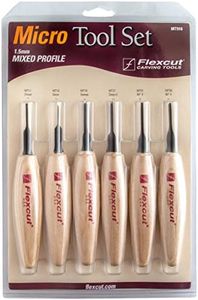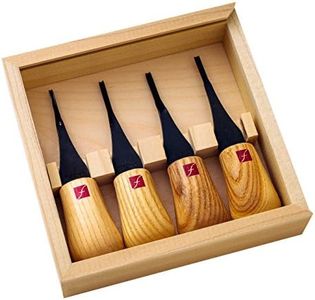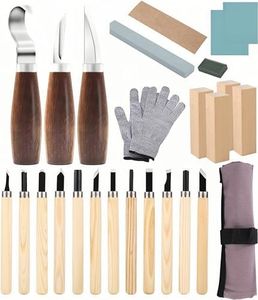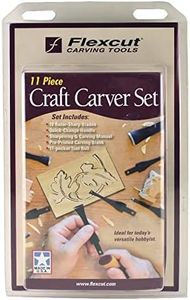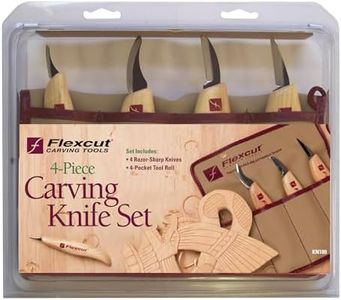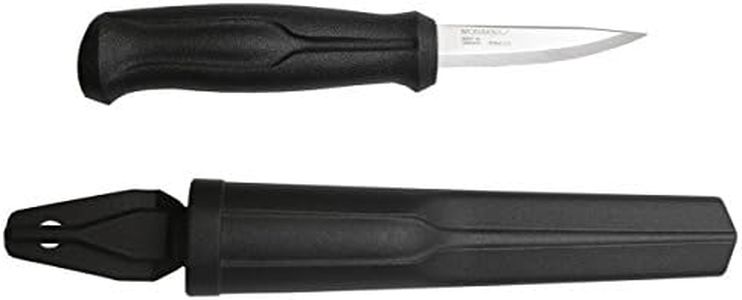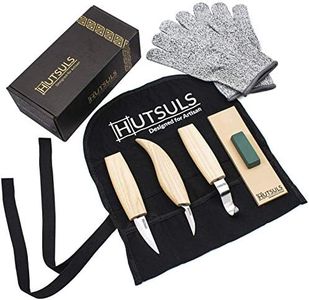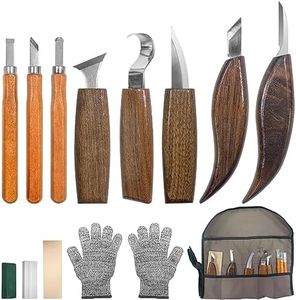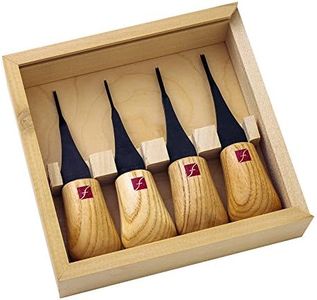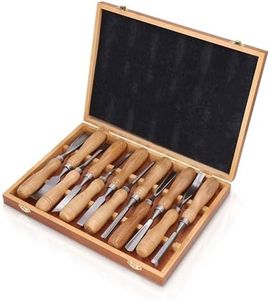We Use CookiesWe use cookies to enhance the security, performance,
functionality and for analytical and promotional activities. By continuing to browse this site you
are agreeing to our privacy policy
10 Best Wood Carving Knives
From leading brands and best sellers available on the web.Buying Guide for the Best Wood Carving Knives
Choosing the right wood-carving knife can make a big difference in your carving experience, whether you’re a beginner or a seasoned hobbyist. The quality of your cuts, the comfort in your hands, and even your safety all depend on picking the best knife for your needs. It’s important to think about what types of projects you’ll be working on and what kind of wood you’re most likely to carve. By paying attention to a few essential features, you can find a wood-carving knife that feels like an extension of your hand and helps bring your creative visions to life.Blade MaterialBlade material refers to the type of metal used in the knife's blade. This is important because it affects sharpness, durability, and how often you need to sharpen the knife. Most wood-carving knives use high-carbon steel or stainless steel. High-carbon steel holds a sharper edge for longer and is easier to sharpen, but can rust if left wet. Stainless steel resists rust and works well with less maintenance but may not stay sharp as long. If you work outdoors or often forget to maintain your tools, stainless might be better for you. If you prioritize sharpness and don’t mind extra upkeep, high-carbon steel may be ideal.
Blade ShapeBlade shape determines what kinds of cuts the knife excels at. Common shapes include straight edges for general carving, hooked or curved blades for scooping and hollowing, and detail tips for intricate work. If you’re mainly whittling or making rough cuts, a straight blade is most useful. For spoons or bowls, a hooked blade helps with hollowing. For fine details, a pointed tip gives you the most control. Think about the type of carving you want to do, and choose a blade shape that matches those needs.
Blade LengthBlade length affects how much control and power you have in your carving. Shorter blades (about 1 to 2 inches) allow for better precision and are good for detail work or small projects. Medium blades (2 to 3 inches) are versatile for general carving. Longer blades can be used for rough shaping or bigger projects but might lack fine control. Beginners may benefit from a medium or short blade for better handling, while more experienced carvers working on larger pieces may choose longer blades.
Handle Material and ShapeThe material and shape of the handle are crucial for comfort, control, and safety. Handles are often made from wood or durable plastics and come in various shapes that fit differently in your hand. A comfortable, ergonomic handle reduces hand fatigue, especially during long carving sessions. If you have larger or smaller hands, look for a handle size and grip that fits you well. Slippery handles can be dangerous, so textured or contoured grips are preferable for better control and safety.
Edge Sharpness and Ease of SharpeningEdge sharpness refers to how finely honed the blade’s edge is right out of the box, while ease of sharpening means how readily you can maintain that sharpness. A very sharp knife allows for cleaner and more precise cuts but will need to be resharpened regularly. Some knives are easier to sharpen by hand, especially those made of high-carbon steel. If you plan to carve often, look for a knife that maintains sharpness but can also be resharpened without special equipment.
Knife Type (Specialty vs. General Purpose)Knives can be specialized for certain types of carving or be more general-purpose. General-purpose carving knives handle most basic whittling and shaping, while specialty knives (like chip carving, detail, or roughing knives) are designed for specific carving techniques. If you’re new to wood carving or want one tool that does it all, start with a general-purpose knife. As your skills develop or if you focus on a particular carving style, consider adding specialty knives to your toolkit.
